Eclipse is an Integrated Development Environment (IDE) written in Java. It can be used to edit Java files, it contains an integrated compiler, a debugger, etc.
Using SSJ with Eclipse simply requires the setup of the build path in
order to tell Eclipse where the classes can be found. A one-time setup is
needed to link Eclipse with the classes, and a project-specific part adds SSJ
to a project's build path. We will now detail these two steps. This procedure
was tested with Eclipse 4.4, but it may work with newer versions of
Eclipse. It should also work for using other third-party libraries with Eclipse.
Instructions written previously for Eclipse 3.2, an older version, can be found here.
See the home page and on-line help of Eclipse for more information on how to use this IDE.
When Eclipse is launched, a window like the next figure will appear.
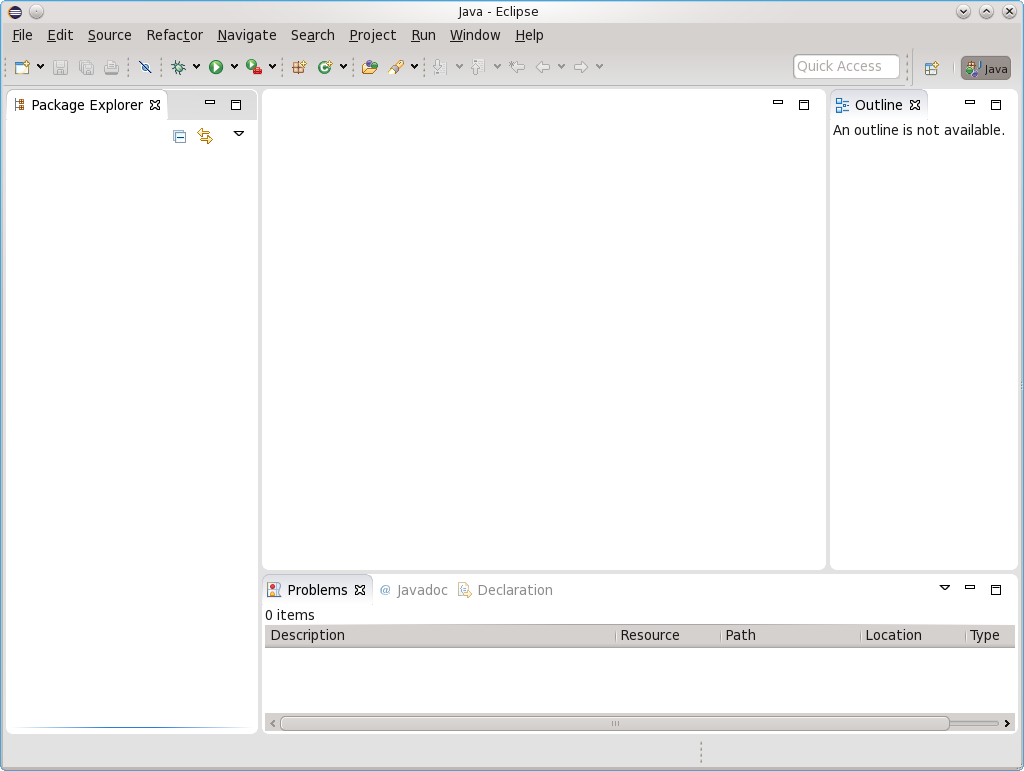
Go to the menu tool <Window> and select <Preferences> to
open the Preferences window.
(Note for Mac users: <Preferences...> should be located in the menu
<Eclipse>.)
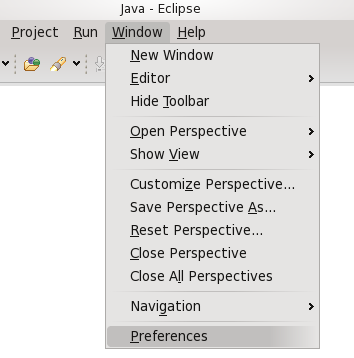
In the left part of the Preferences window, select <Java>, <Build Path> and <User Libraries>.

Click on the button <New...> and a dialog box will pop up. Eclipse asks for the name to give to the new user library. The user can enter any meaningful name, e.g., SSJ.
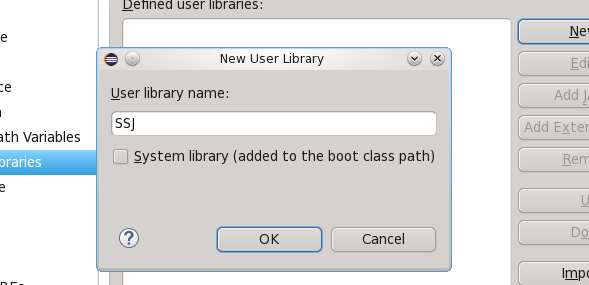
Press the button <OK>. The library SSJ should now appear in the list of user libraries, like in the next figure.
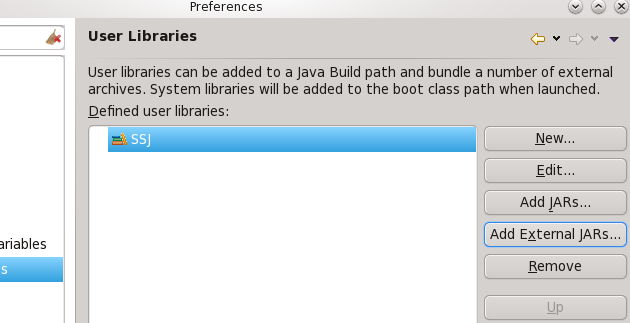
Click on the button <Add External JARs...> and a dialog box will open. Select every JAR file in the lib subdirectory of SSJ. After the operation, the archives appear as children of the user library, like in the next figure.

The Preferences window can now be closed by clicking on the button <OK>.
In Eclipse, a project in Java can be created by going to the menu tool <File>, <New> and then <Java Project>. In this example, we will name the new project as TestSSJ.

Now, do a right-click on the project (that needs the library SSJ) in the Package Explorer panel, found on the left side of the Eclipse window.
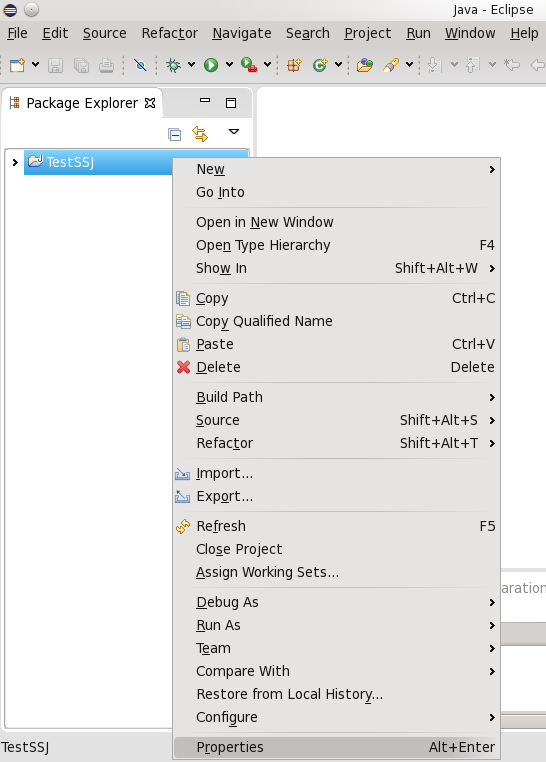
Select the menu item <Properties> and the Properties window will open. On the left panel, select <Java Build Path>, then click on the <Libraries> tab. The Properties window should now be similar to the next figure.
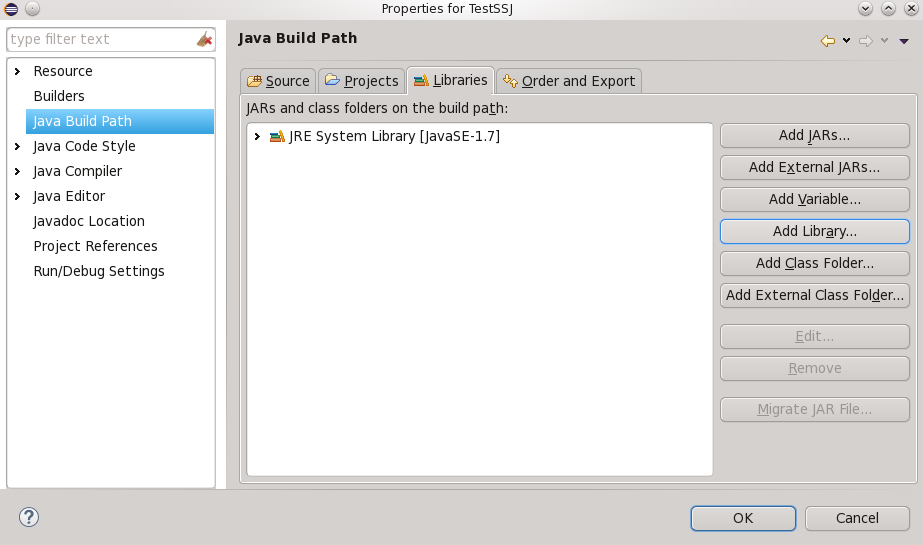
Press the button <Add Library...>. The dialog box named Add Library will appear. Select <User Library> like in the next figure.
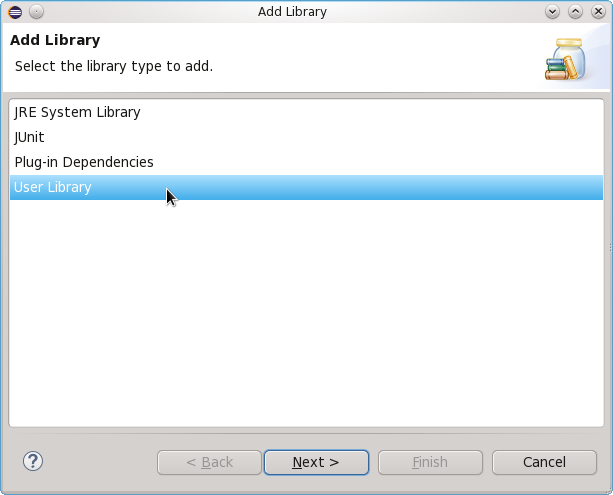
Press the button <Next>. Select the library SSJ from the list of libraries, and click on the button <Finish>.
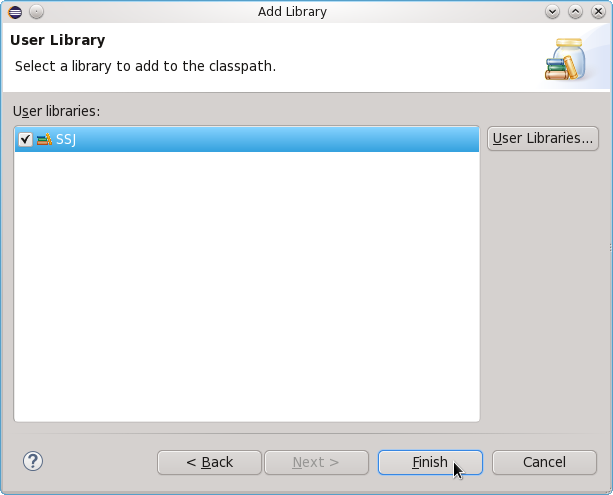
Press the button <OK> to close the Properties window. The library SSJ with all its JAR files should now appear in the Package Explorer panel of the project.
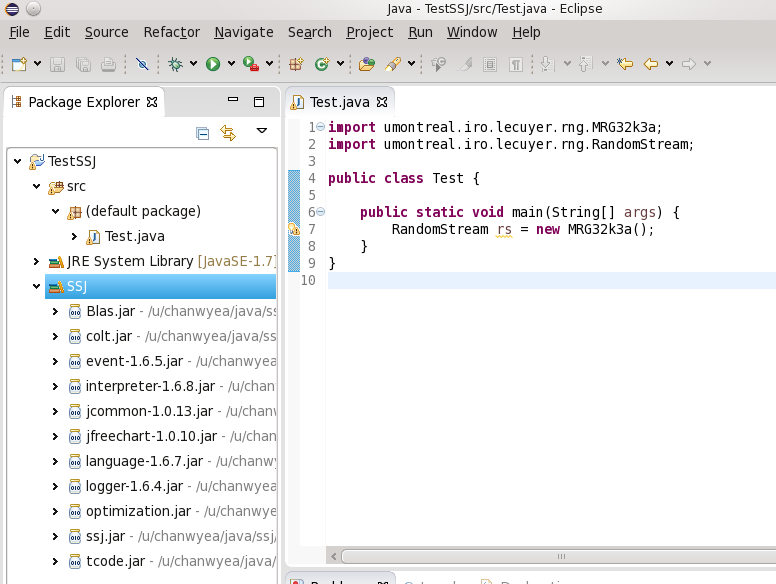
The project can now use the library SSJ, as shown by the example file Test.java.